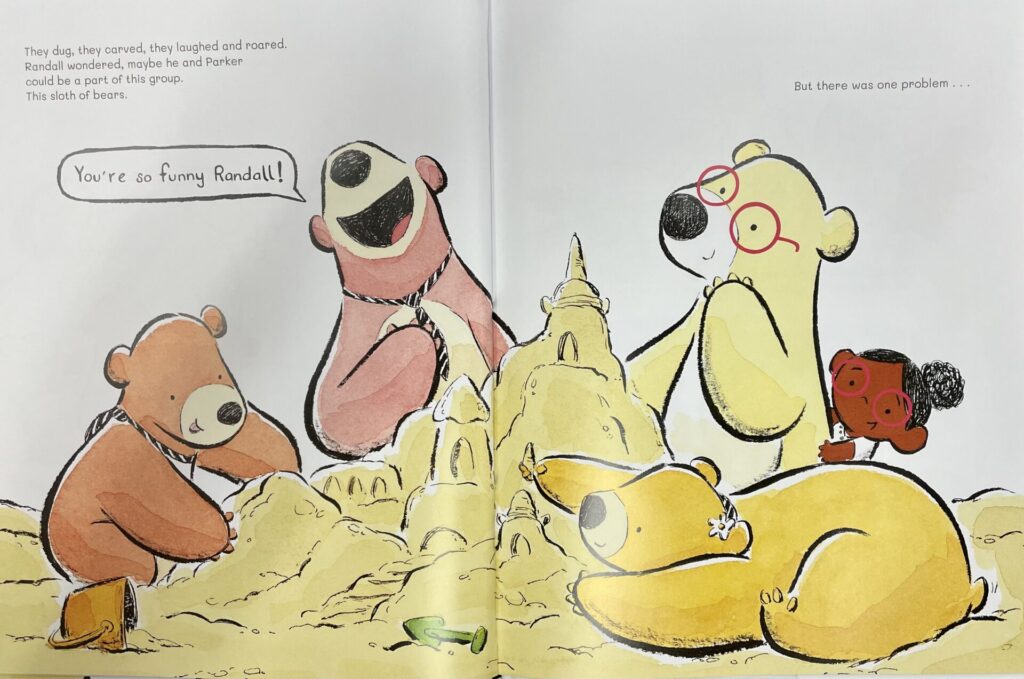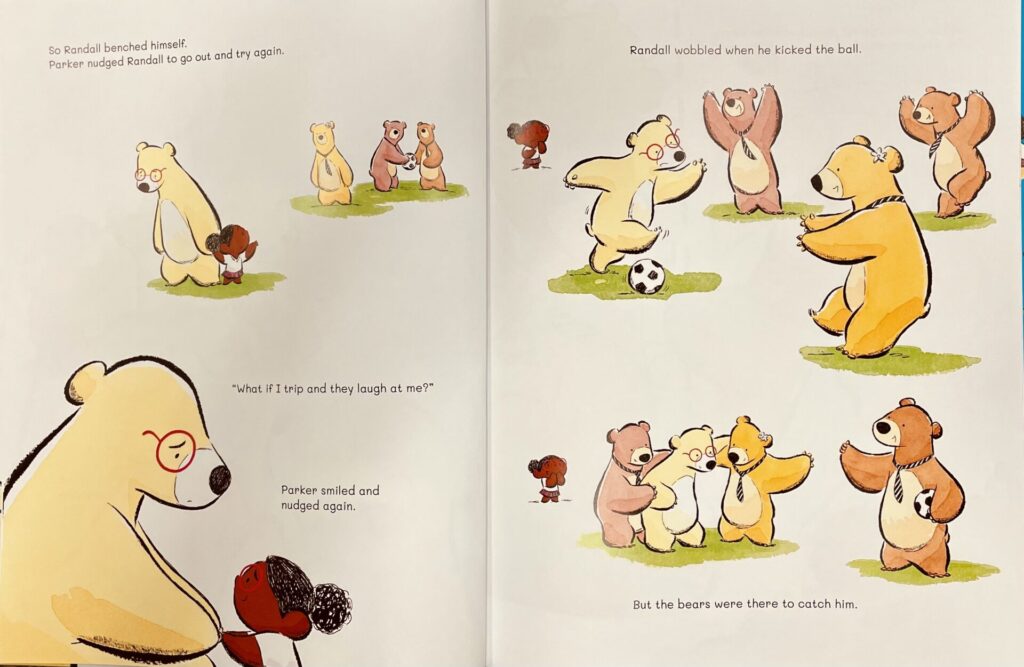
Why I Picked It Up:
We were lucky to receive this book from Penguin Publishing for a review. When we were asked if we were interested, I couldn’t resist, especially after being captivated by the book teaser and the adorable cover picture.
Why I Finished It:
The teacher heart in me loved how this picture book had a relatable and strong plot. I immediately became quite invested in the main characters, particularly Randall, the bear. Randall is initially hesitant about approaching friends and joining a group, but with some encouragement from his “friend” Parker, he reluctantly joins another group of bears. As time passes, he becomes an integral part of the sloth (you read that right – “sloth” is the official collaborative noun for a group of bears!). Gradually, Parker fades into the background, and there’s a concern about how she is faring. Fortunately, readers, Randall keeps tabs on his old friend and checks in on her.
Who I Would Give It To:
This book is ideal for children facing challenges in joining groups, such as a going to a new school or moving to a new community. It would also be beneficial for children navigating multiple friendships. It serves as an excellent read-aloud choice for any elementary classroom, providing a valuable starting point for discussions about the intricacies of making friends and maintaining friendships.
Integration Ideas:
Making Inferences:
In this story, students will need to infer information about Parker. Although she is an imaginary friend, it is not explicitly stated. Through the combination of artwork and the narrative, students are expected to deduce that Parker is indeed imaginary.
- Stop on the page where Randall is building a sandcastle with his new friends and the author says, “But there was one problem …”. Tell students that when they see ellipses they should stop and think. Make an inference as to what the problem might be. Write down the answers on an anchor chat.

- At the bottom of the next page, it is stated that the other bears do not see Parker. This is a great time to confirm or adjust inferences. Again, chart students’ thinking.
- As Randall begins to play with his new friends, he has concerns. Have students make inferences about how Randall feels and why. Also, have them make inferences about how Parker is helping Randall.

As the story progresses, there are additional interactions between Randall and Parker. Encourage students to engage in discussions about these developments. What makes this book intriguing is that it leaves much open to interpretation; students have ample opportunities to make inferences throughout the narrative.
Analyzing Character:
Both Randall and Parker have strong personalities. Have students explain how each character is feeling and what their personality, or trait, is. Have them explain what happened in the text that makes them answer that way. Share a word bank with students to help them with ideas. For example:
Additionally, Randall changes throughout the book, so he is a great character to use to talk about character changes.
Looking for a ready-made word bank? Try our Character Traits and Feelings Cards!
Finding Theme:
Themes are universal ideas conveyed in a text that resonate with shared human experiences. These themes often center around abstract concepts and the author’s perspectives on them. In Imagine You and Me, the characters are exploring and developing their insights and emotions related to friendships and fitting in. Therefore, it would be beneficial to prompt students to contemplate what truths the author is conveying about friendship in the narrative. Facilitate class discussions and, if possible, debates on this topic. Ask students to share their interpretations of what the author is trying to communicate about the essence of friendship. Afterward, have them form groups based on shared agreement and gather evidence to support their perspectives. Each group can then engage in a debate, ultimately leading to the identification of two key overarching ideas about the truth of friendship.
Using Punctuation – Quotations:
This picture book is rich in the use of dialogue, therefore such a great mentor text for teaching how to punctuate quotation marks.
Take one quote per day, and post on the board.

“Can I build a castle with you?” she asked.
Ask the students what they notice. They might say capital letters, question marks, quotation marks, etc. Each day direct them to one specific point to teach. Some ideas would be that in this example: the quotation marks are around what is actually said, it began with a capital letter, the question mark is inside the quotation mark, the s in she is lower case, etc.







Leave a Reply